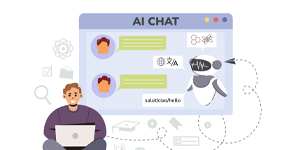Global Hiring: How Companies Access Talent Beyond Borders
As the world economy has become more connected, hiring people from around the world has gone from being a choice to a core business requirement. Companies don't have to employ people only from nearby areas anymore; they can now tap into a remote global workforce filled with diverse skills, perspectives and innovation from every part of the world.
From fast-growing startups to multinational enterprises, organizations are using cross-border recruitment to fill critical skill gaps, drive productivity and learn about other cultures that make their global impact stronger. Hiring people from other countries not only makes it easier to get expert help but it also makes companies more competitive in a world were working together digitally is normal.
However, global hiring comes with challenges. Companies must handle complex employment laws, payroll systems, cultural differences and time zone management also. Success requires a well-designed international hiring strategy supported by reliable global HR solutions and modern collaboration tools.
This article will talk about how companies can find ability in other countries, the best strategies for international hiring in 2025, and how technology enables global talent acquisition. You’ll also find practical steps, case studies and solutions to the challenges of cross-border recruitment, showing exactly how companies hire global talent beyond borders effectively and sustainably.
Why Global Hiring Matters Now
As the business world changes and the competition for talent heats up, companies are learning that staying in one place can stop them from growing. The shift toward global hiring helps businesses to find and hire a wider range of people become less reliant on local job markets, and improve their operational resilience. We can fill specific technical roles or put together teams that really mirror the diversity of the world, cross-border recruitment is transforming how enterprises compete, innovate and scale.
- Talent Scarcity & Competitive Advantage: In many markets, local talent is scarce or extremely expensive. By broadening the talent pool through cross-border recruitment, organizations can find niche skills better diversity of thinking and cost efficiencies.
- Remote Work Normalization: The normalization of remote work has proven that many roles do not require physical proximity. This shift empowers companies to fully adopt international talent acquisition strategies with confidence.
- Speed & Time-Zone Advantage: Having teams distributed across time zones can enable near-round-the-clock productivity. A well-coordinated remote global workforce can cut down on development times, help areas directly and produce more quickly.
- Global Market Reach & Localization: When companies hire globally, they often gain cultural insights and language skills needed to localize products. This offers a strategic advantage for expansion into new markets using knowledge from global talent sourcing.
Key Concepts & Terminology
Before we go any further, we should ensure that we understand the following important terms:
- Global hiring is the larger process of finding, hiring and handling workers in more than one country.
- Cross-border recruitment is the process of hiring people from other countries, including dealing with legal, tax and visa problems.
- International talent acquisition offers a more complete view of hiring, encompassing sourcing, company branding and coordination between nations.
- HR tasks around the world are supported by global HR solutions, which include tools, platforms and services for things like payroll, benefits, compliance and performance management.
- Searching for and hiring people from around the world is what global talent sourcing is all about.
- Remote global workforce, hiring people from all over the world who work from home.
- The plan and framework that businesses use to hire people from other countries on a regular basis is called an international hiring strategy.
Building the Foundation — International Hiring Strategy
A strong international hiring strategy is the key to hiring people around the world successfully. Here is a step-by-step guide:
Step 1: Define Hiring Objectives & Regions
List the jobs or skills that are needed, such as data scientists, UX designers and compliance officers. Your strategic growth goals, the availability of talent, the cost of doing business, the language barrier and the rules and regulations in the area should all help you choose where to expand.
Step 2: Decide Hiring Model
You have several models of global employment:
- Entity-based hiring – set up a legal entity in each country (subsidiary).
- Employer of Record (EOR) or global HR solutions provider – a third party takes care of local hiring and rules.
- Freelancers and independent workers hire people under contractor agreements (note: higher risk of not following through).
- Hybrid or distributed offices combine a legal presence in the area with jobs that can be done from home. When it comes to cost, control, compliance and speed, each plan has pros and cons.
Step 3: Compliance & Legal Considerations
Talk about data privacy laws, tax laws, employment laws, benefits, worker classification, visas or work permits, social security, local labor laws, rules for firing employees and tax laws. Talk to a local labor lawyer or work with a global HR answer at all times.
Step 4: Sourcing & Employer Branding
Adapt your employer value proposition (EVP) for local markets: highlight your international culture, remote flexibility, competitive compensation and career mobility. Use local job boards, global platforms (e.g., LinkedIn, remote job sites) employee referrals, recruitment firms and social media. Leverage global talent sourcing tools and pipelines.
Step 5: Selection, Assessment & Interviews
Interviews that can be done over video calls, coding tests or timed jobs work well from afar. Think about the person's time zone, language skills, fit with your culture and their own ability to handle things. To avoid bias against people of different countries, use structured interview rubrics.
Step 6: Onboarding & Integration
Offer full online onboarding, which includes legal paperwork, training, getting to know the culture, setting up technology, coaching and getting into the system. New workers should be paired with "local champions" or friends on the team who can help them get started.
Step 7: Compensation, Benefits & Payroll
Benchmark compensation locally to ensure competitiveness (cost of living local wage norms). Provide benefits (healthcare, pension, insurance) as required or customary. Use global HR solutions or EORs to manage payroll, tax withholding and compliance.
Step 8: Performance Management & Engagement
Set performance goals, feedback cycles, and reward systems that take into account things that affect people in different locations and cultures. Use tools like OKRs, goal trackers and platforms for continuous input. Spend money on building a culture, having team meetings (real or virtual) and making sure everyone feels welcome.
Step 9: Scaling & Iteration
Keep an eye on KPIs like time-to-hire, cost-of-hire, staff retention, productivity and happiness. Use measurements and comments to improve the way you hire people from other countries. When things are stable, you can move on to new places.
Best Strategies for International Hiring in 2025
In 2025, certain trends and tactics are making global hiring more effective. Below are recommended strategies:
- Embrace Skills-First, Not Location-First: Train workers based on their skills, not where they live. Pay attention to skills (like "Python + data engineering") instead of location. This change in attitude makes it easier to find talent around the world also.
- Use Regional Talent Hubs: Do not try to hire everyone all at once. Instead, create hubs in places where there are lots of qualified people, like Eastern Europe, Southeast Asia and Latin America. From those hubs, spread out.
- Local Leadership & Ambassadors: Hire local politicians or ambassadors who know the community, networks and ways of working in the region in question. They can lead the way in hiring people in that area.
- Leverage Asynchronous Collaboration: Set up ways to work when you can't be together (for example, shared dashboards, recorded talks and documentation). This keeps everyone productive across time zones without making everyone online at the same time.
- Cultural Fluency & Training: Implement methods that allow working from home (for example, shared dashboards, recorded meetings and documents). This keeps people working effectively in different time zones without needing to be online at the same time.
- Use Data-Driven Hiring: Analyze the effectiveness of your cross-border recruitment funnels, including conversion rates, retention rates and how to make them work best for each area. Use recruiting tools that use AI to find the best people from around the world.
- Flexible Benefits & Stipends: Offer benefits that are good no matter where they are (like a home office stipend, global health insurance and flexible plans) so that people will want to work for you. Allow workers to pick perks that are best for their area.
- Invest in Global HR Infrastructure: Adopt global HR platforms that unify payroll, benefits, compliance, performance and recruitment in one place. These global HR solutions reduce fragmentation.
- Partner with Local Experts: Hire more quickly and handle compliance risks by collaborating with local staffing companies, EORs, lawyers or country experts.
- Pilot First, Then Scale: Run a pilot in one or two countries before scaling globally. Learn lessons, refine onboarding, and adapt your workflows.
How Technology Enables Global Talent Acquisition
Technology is a major enabler for international talent acquisition and global hiring. These three or four times are some of the most important technological enablers:
- Global HR & Payroll Platforms: HiBob, Remote, Deel, Papaya Global and Rippling are some of the platforms that bring together information from different countries about workers, payroll, benefits and compliance. They make global HR options easier to use and lessen the work of administration.
- AI-Powered Candidate Matching & Recruitment Tools: Recruiting marketplaces and ATS (Applicant Tracking Systems) with AI capabilities match your role with best-fit global candidates, rank applicants and automate screening accelerating global talent sourcing.
- Virtual Assessment & Interview Tools: Using video interview platforms (like HireVue) or tools like HackerRank, Codility and Mettl, businesses can evaluate candidates from afar, consistently, and on a large scale. This is a core way that how technology enables global talent acquisition in practice.
- Collaborative, Communication and Productivity Tools: Platforms like Slack, Microsoft Teams, Notion, Asana, Zoom, Miro and documentation systems help teams working together in different places stay in connection share information and stay organized.
- Analytics & Dashboards: Dashboards on HR analytics platforms show hiring funnels, diversity metrics, time-to-hire by country, retention curves and metrics for remote output, letting leaders track ROI on global hiring and cross-border recruitment.
Together, these technologies get rid of problems, make operations bigger, make sure rules are followed and give leaders the confidence to handle a global workforce that works from home.
Challenges of Cross-Border Recruitment and How to Solve Them
- Cross-border recruitment gives a lot of chances and also some unique problems. Companies that hire people from other countries have to deal with laws, payment methods and cultural norms that are different from their own.
- Following the law is a big problem. Work and tax laws are different in each country also. Partnering with global HR solutions or local pros can help you avoid mistakes that cost a lot of money.
- Cross-border payroll and perks can be hard to understand. With global HR platforms, payments are made correctly, rules are followed and it's easier to handle employees from different countries and tax systems.
- The chance of worker misclassification is also there. Legal issues and compliance are avoided by having clear contracts or hiring through an Employer of Record (EOR).
- Communication problems and different time zones can make it hard to get work done. Flexible schedules, asynchronous contact, and collaboration tools help businesses get around this problem.
- When people speak and live-in different cultures, it can be hard to understand each other. Holding regular meetings, teaching about other countries and moving in with other people can all help group work.
- When there are problems with visas or local processes, onboarding often takes longer than planned. Hiring people goes faster when you plan ahead or use EOR services.
- Keeping people on can be harder for online teams. Check-ins, comments and chances to grow on a regular basis help keep people engaged.
- Finally, data protection is very important. To keep employee information safe, global teams must follow data security laws like GDPR.
Example: A U.S. company faced legal trouble in India after hiring contractors who were later deemed employees. Switching to an EOR solved compliance and payroll issues quickly.
Overall, overcoming cross-border recruitment challenges requires proper planning, trusted global partners and clear communication across regions.
Example: Solving Classification Risk
A U.S. company hired designers in India as contractors to avoid employment overhead. However, Indian authorities recognized them as full employees, imposing penalties. To fix this, the company moved them to an EOR setup, issued correct employment contracts, and offered region-appropriate benefits. This eliminated risk while enhancing employee morale.
Example: Managing Onboarding Delays
A European firm tried hiring engineers in Brazil. But immigration and local registration delayed start by 4–6 weeks. Recognizing this, they switched to local contractors via a Brazilian EOR for the first 3 months while establishing a local entity in parallel. Their software release schedules remained unaffected.
By proactively anticipating these challenges, you are better equipped to execute international hiring strategy effectively.
Step-by-Step Guide to Executing Global Hiring
Here’s a consolidated, actionable checklist:
- Planning & Pre-work: Define roles, skills, and locations. Decide on hiring model (entity, EOR, contractor). Budget for salaries, benefits and HR overhead and engage legal or HR partners in target countries.
- Sourcing & Recruiting: Localize job descriptions (language, market norms). Post on global and regional job boards. Use global recruitment tools and AI matching and promote employer brands internationally.
- Screening & Evaluation: Use structured interview rubrics. Administer remote assessments. Check references internationally and assess cultural fit and remote working skills.
- Offer & Contracting: Draft compliant offers with local norms. Decide on currency, benefits, and tax treatment and use EOR or local entity for contract issuance.
- Onboarding & Integration: Set up IT, tools, software access. Provide orientation materials and training. Pair with mentors or “buddies” and create social interaction opportunities.
- Performance & Development: Define OKRs or KPIs. Hold regular feedback sessions. Offer training, cross-team exposure and recognize contributions publicly.
- Retention & Culture: Encourage inclusion and belonging. Provide career paths and upskilling. Host annual retreats or meetups and regular pulse surveys and check-ins.
- Review, Iterate & Scale: Monitor metrics: retention rate, hiring velocity, cost of hire, performance. Analyze region-wise successes and failures. Scale into new countries gradually and update policies and processes as teams grow.
Use Cases / Case Studies
Use Case A: Global Customer Success Team
A SaaS company needed multilingual customer support agents in APAC, Latin America and EMEA. They deployed a remote global workforce strategy. They hired people through local staffing companies, put them through a global HR platform for compliance and payroll and gave them base pay plus bonuses that were based on where they lived. Within six months, they cut down on average response times, raised customer satisfaction across the area and added more service hours.
Key lessons: decoupling pay from local salary norms, using global hiring platforms, and investing in local cultural training.
Use Case B: Engineering Center in Latin America
A U.K. company decided to establish a remote engineering hub in Colombia instead of opening a local office initially. They hired a first group of 10 engineers through an Employer of Record while also looking into how to form a local company. That hub grew to 50 engineers over the course of 18 months and finally became a real subsidiary. The company cut down on building costs, reduced risk and could grow as needed.
Key lessons: piloting through EOR, transitioning gradually to entity, and using international talent acquisition tools.
Conclusion
Global hiring has evolved into a key business strategy for organizations aiming to stay competitive in a connected world. With a strong international hiring strategy, companies can find the best workers anywhere in the world and quickly fill skill gaps and build a diverse remote global workforce that drives innovation and growth also. Partnering with reliable global HR solutions simplifies payroll, compliance and getting people introduced, thereby rendering growth faster and more effective.
Modern tools show how technology enables global talent acquisition, helping businesses find, evaluate and keep skilled workers quickly and easily also. Using cloud-based HR systems and AI-powered hiring tools, people from different countries and time zones can easily work together and get things done quickly.
Although cross-border recruitment brings great opportunities, it also poses challenges such as legal compliance, payroll management and cultural alignment. Businesses that prepare with the right processes clear contracts and trusted partners overcome these issues and stay ahead.
By investing in global talent sourcing and applying the best strategies for international hiring in 2025, long-term success can come from having access to new ideas, creativity and expert knowledge also. Ultimately, how companies hire global talent beyond borders defines their ability to think of and come up with new ideas, develop and struggle on a global scale. By allowing global hiring immediately, we may create a staff that is more flexible and long-lasting tomorrow.
Read More: Remote Work Trends 2025: Transforming Global Employment





